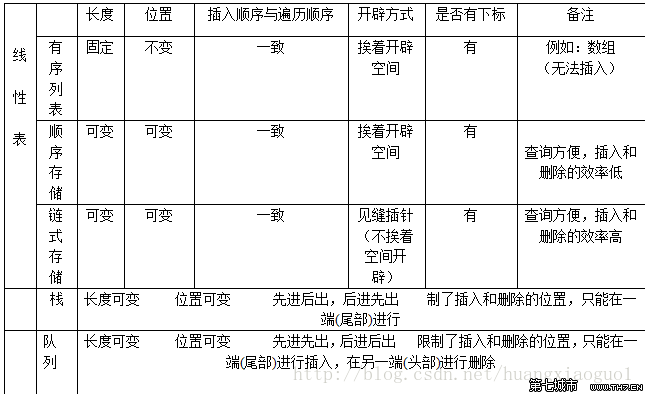
Regain the basics of java (fifteen): Summary of data structures
1. Common data structures
1. Overview A. Data Structure is the study of how to organize, store, and manage a bunch of data; such as an array. B. Common data structures include stacks, queues, linked lists, linear lists, and trees.

C. Hash table (hash table) @ directory (sequential storage) + queue (linked list) @ query efficiency High, the efficiency of insertion and deletion is also high @ Complex structure, no subscript D, tree shape @ Binary tree Balanced binary tree (red-black tree) @ Node Subtree Left subtree (smaller than the node) Right subtree (larger than the node). @ Query is very fast
2. Overview of Java collections (java.util package)
In actual development, we often encounter To: Need to store a bunch of uncertain number of data. The length of the array is fixed, so it cannot be used.
2. A collection is a kind of super array:
a. Length Variable
b. Automatic growth
c. Can store any type of data
3. Generics
A. The use of generics
One problem: Collections are very convenient when storing data (any type is acceptable), but when fetching data, I don’t know what type to force it into. This It’s called a type safety problem
2. Solution: Limit the collection to only store one type. In actual development, the same type of data is stored in a collection
3. How to limit the collection to only store one type? ArrayList
4. Generics only appeared in JDK5. Generics only support reference data types (basic data types require the use of corresponding wrapper classes)
5. JDK7 simplifies the syntax of generics: generic writing ArrayList
6. When using collections in the future, generally It is recommended to use generics. There is no need to perform forced conversion when fetching data.
7. All Java collection classes implement generics. If generics are not used when using these collection classes, the default is ObjectB. , The implementation principle of generics
Let the data type be parameterized (arbitrary)
2. Generic methods
3. Generic class
4. Generic interface
5. Implementation steps: //1. Declare generics //2. Use generics //3. Specify types for generics
C. Compare generics and Object. Generics are as flexible as Object, but they can also solve type safety issues.
D. JAVA implements pseudo-generics
1. The JVM supports generics only if it is truly generic. The JVM does not support generics, but it can execute code containing generics
2. Let the compiler support generics when compiling the code, and support generics. Type syntax check
3. Once the compiler passes the compilation of the code, it will delete the generic information in the code (type erasure), so that when the JVM is executed, there will be no generics in the code.
The above is the content of Regaining the Basics of Java (Fifteen): Data Structure Summary. For more related content, please pay attention to the PHP Chinese website (www.php.cn)!




